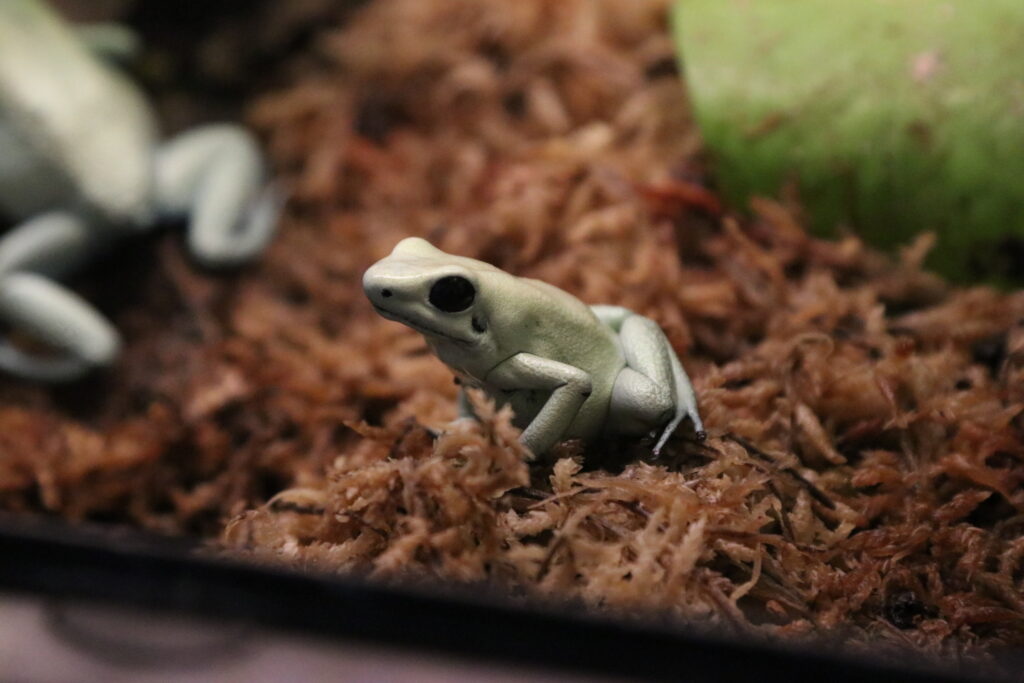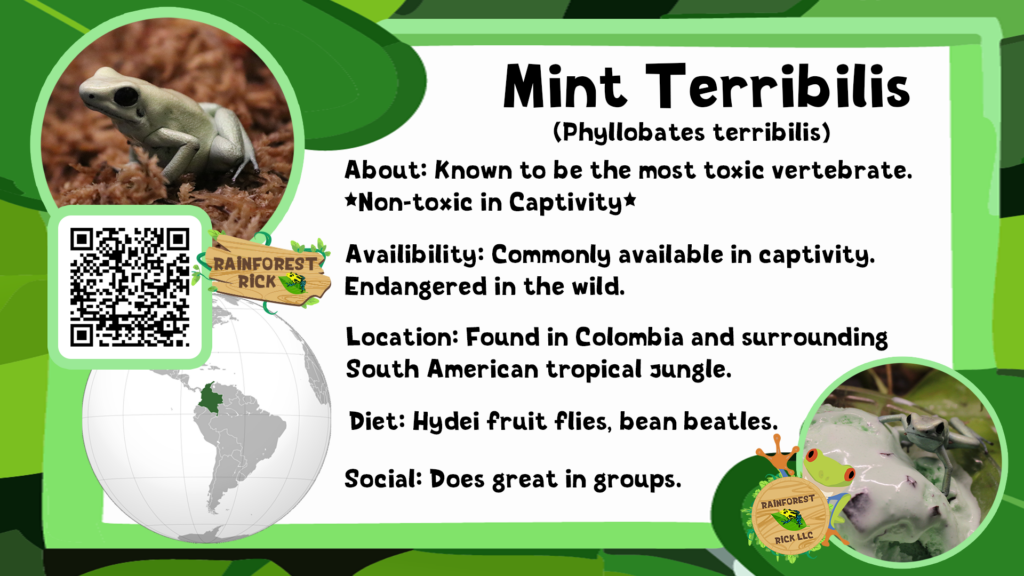Mint Terribilis Care Guide

Here’s what works for us as a care guide for Mint Terribilis (Phyllobates terribilis):
Special Note: This uniquely colored terribilis originally evolved its warning color in a separate region of the jungle apart from the more commonly known Orange Terribilis. These look like mint ice cream! Latin name is terribilis because if they eat fire ants and certain beetles in the wild, their skin becomes poisonous and adult frogs can kill 10-15 adult humans! They are known as the most toxic vertebrate on the planet. However, this poison is all diet-based. In captivity they are completely non-toxic and harmless.
Great beginner frog: They are relatively easy to care for, making them suitable for beginners. Diurnal, meaning they are awake during the day and sleep at night.
Intense mint metallic coloration when mature: They develop vibrant mint coloration as they mature, adding visual appeal to your vivarium.
Bold: They are known for their bold and active behavior, making them interesting to observe.
Easy to breed: With proper care and setup, they can breed readily in captivity, though they may take more than 2 years to begin breeding.
Loud call: Adult males produce a loud, trilling call during the day, which adds to the vivarium’s ambiance. They are quiet at night.
Size: Adults can grow up to around 2 inches for females and 1.75 inches for males.
A true Dart Frog: They are a member of the dart frog family, known for their striking colors and toxic secretions (though captive bred frogs are non-toxic).
Housing: standard vivarium setup.
Vivarium Size: Like many dart frogs, a general rule of thumb is 5-10 gallons per adult frog. A 10-gallon tank is better for a single adult frog, and larger tanks like a 29-gallon or 24x18x18 vivarium are recommended for 1-3 frogs to provide ample space.
Temperature: They prefer temperatures in the low to mid 70s Fahrenheit, with a range of 65 to 80 degrees. Temperatures over 80 can be dangerous.
Humidity: They require high humidity levels, ideally between 70-100%. They can tolerate lower humidity down to 50% for short periods with access to a shallow dish of water.
Feeding: They eat flightless melanogaster fruit flies when young and can consume the larger hydei fruit flies, bean beetles, and crickets up to 1/4 inch when adults. These should be dusted with a calcium-vitamin supplement such as Repashy Calcium Plus. (Per adult: ~20 hydei fruit flies every 2-3 days). A banana slice in the vivarium makes for a great feeding station and helps keep the fruit flies in one area.
Sexing: Sexing terribilis can be challenging. Males may display black stretch marks on their throats and will produce a loud call during the day. Females may be slightly larger and may be more “pear-shaped” when mature.
Social Behavior: They can be kept in groups, but adequate space should be provided.
Age: Capable of living more than 20 years in captivity under ideal conditions, a lifespan of 10-15 years is more common.
Handling: Poison Dart Frogs should not be handled except when they are being moved to or from a vivarium. Handling more than that may cause a seizure and sometimes death!

